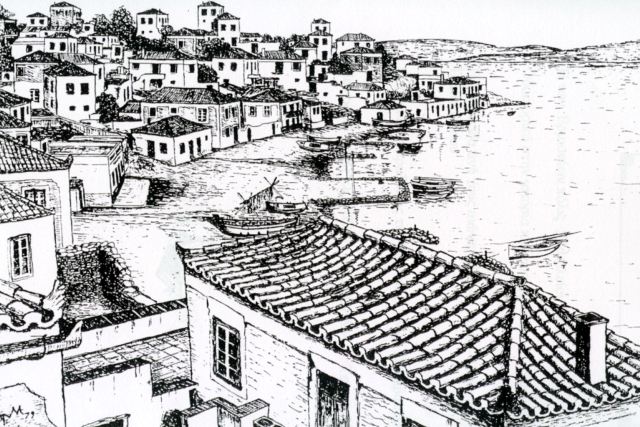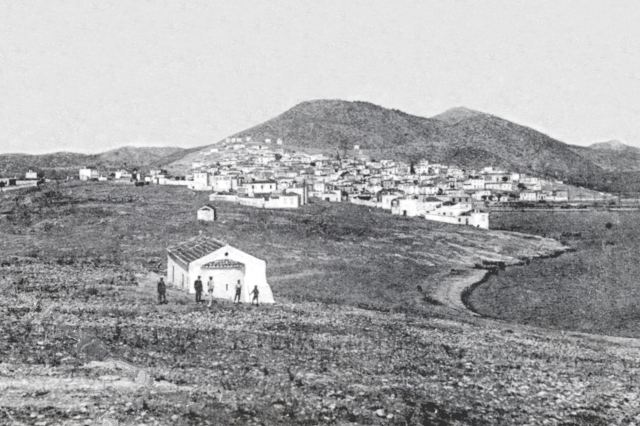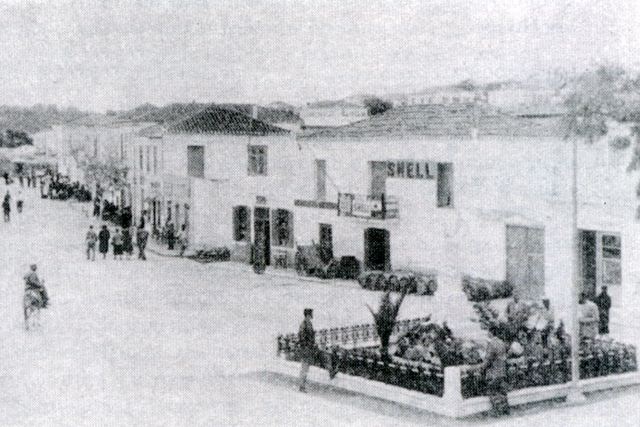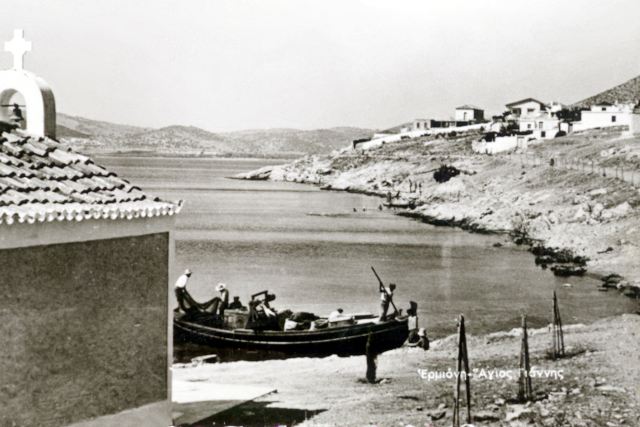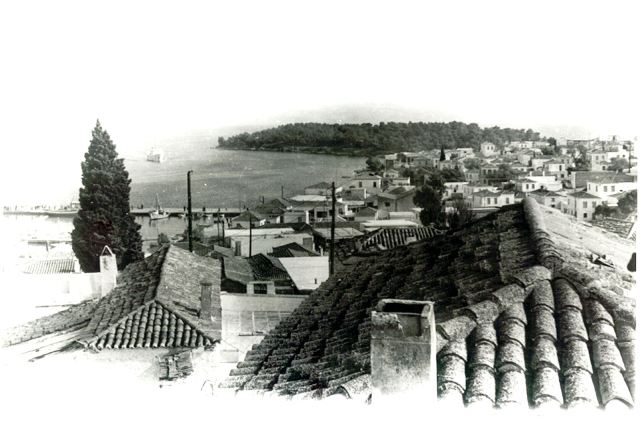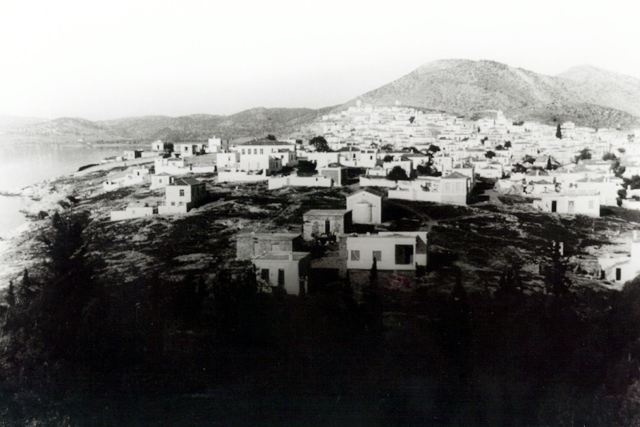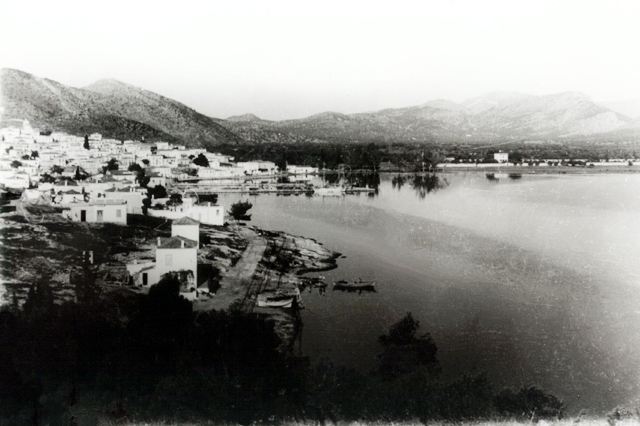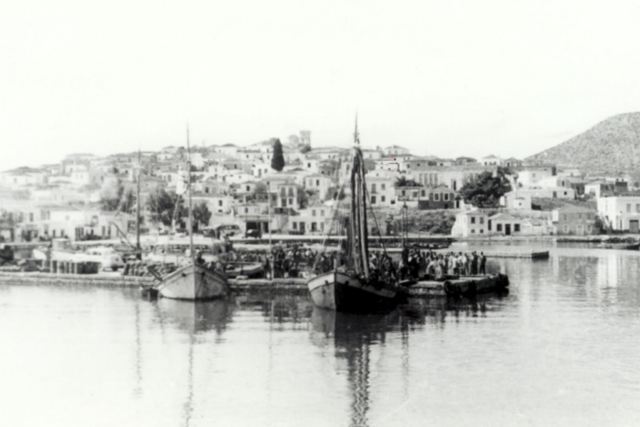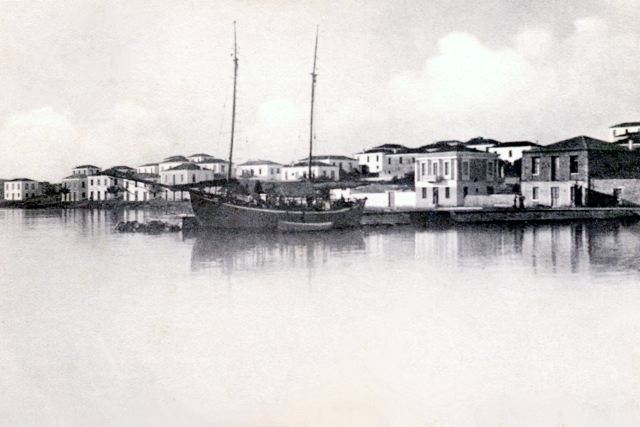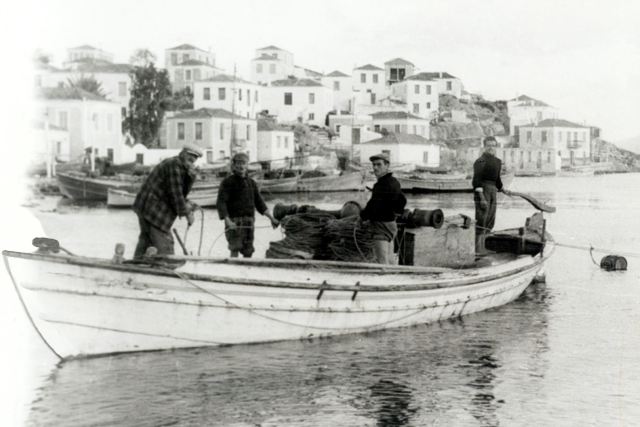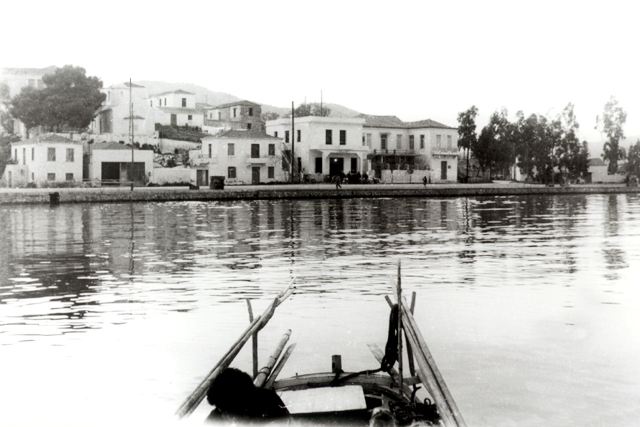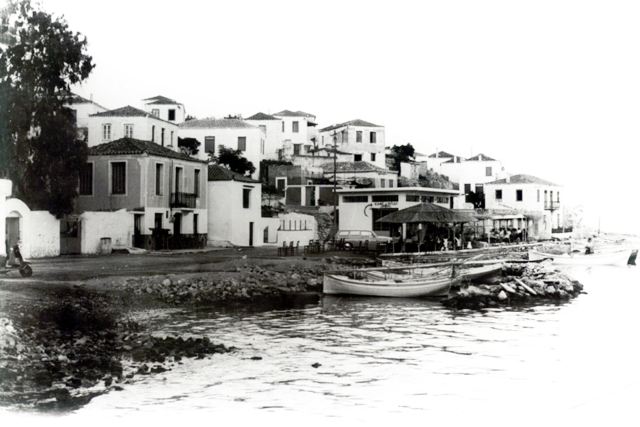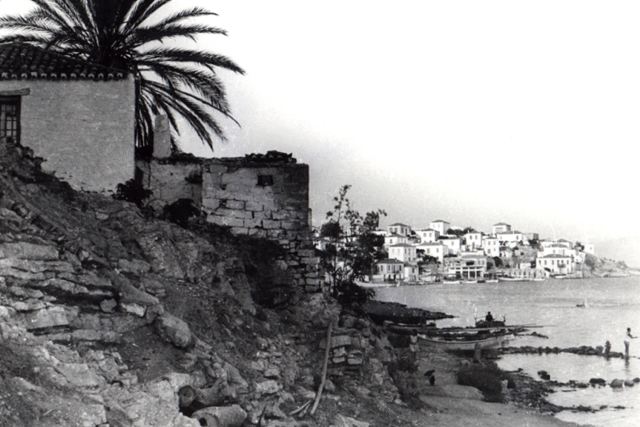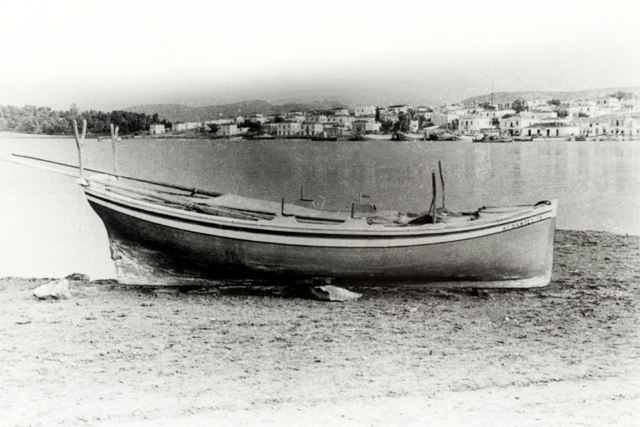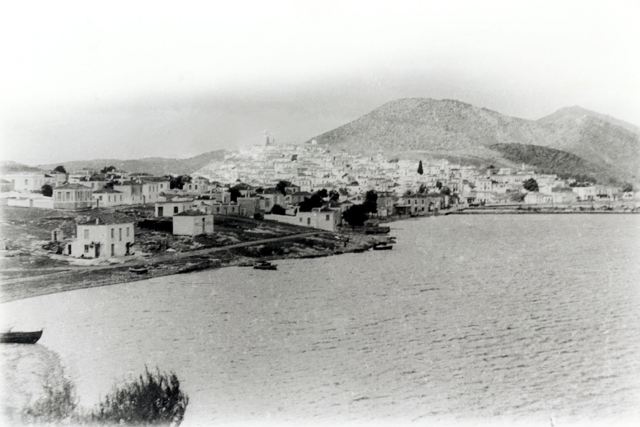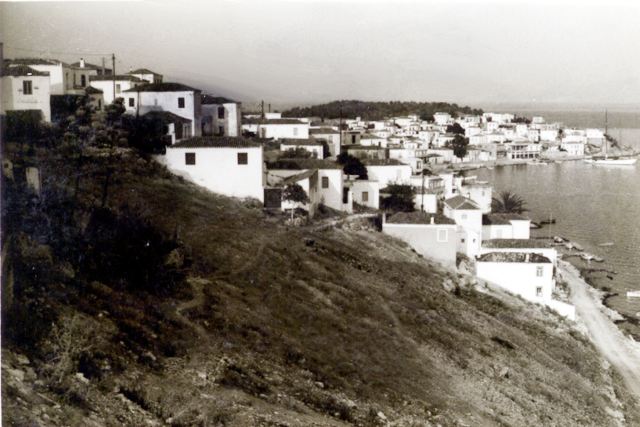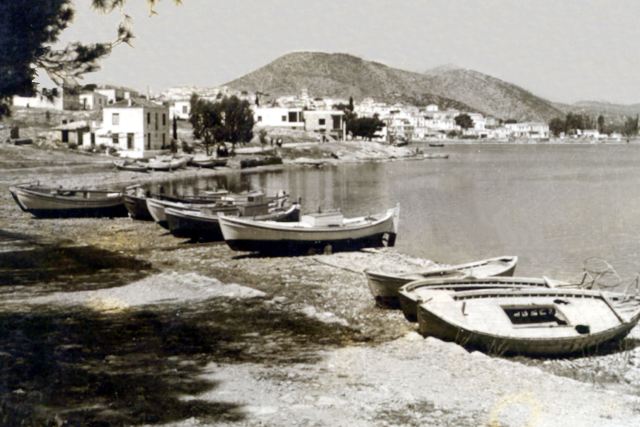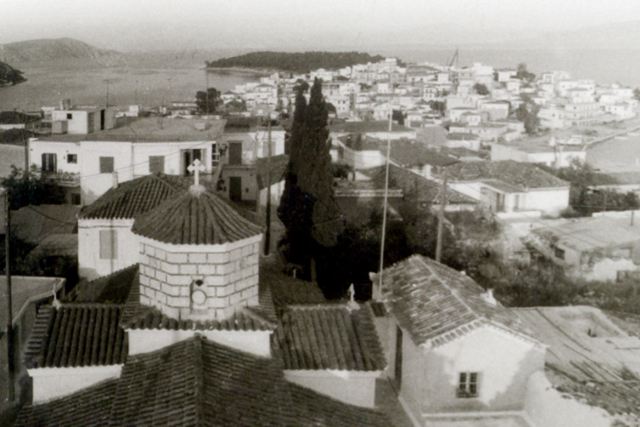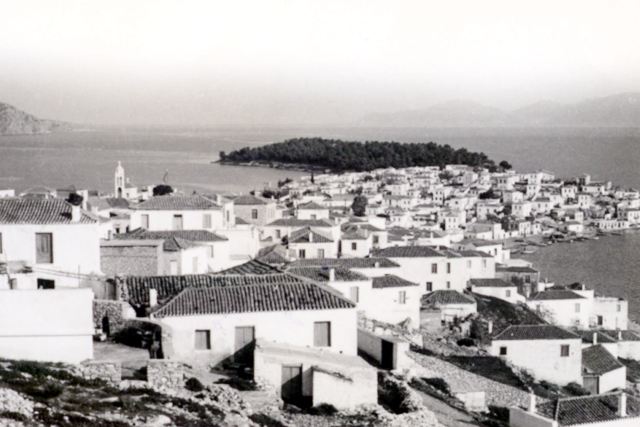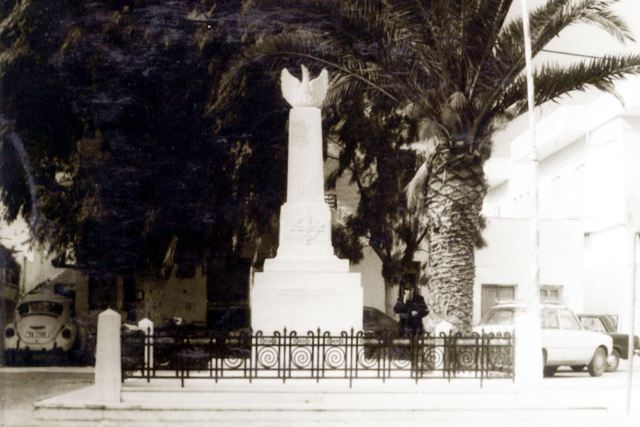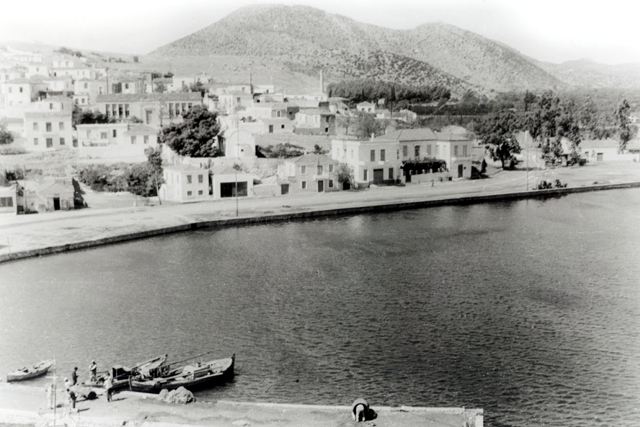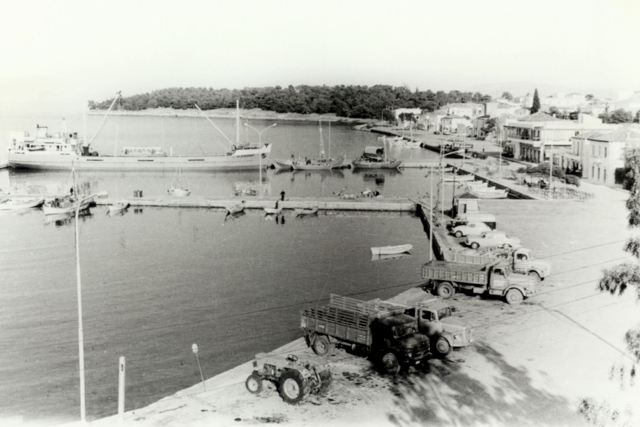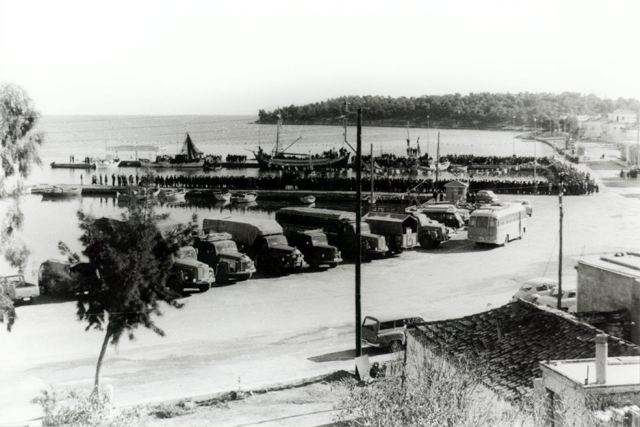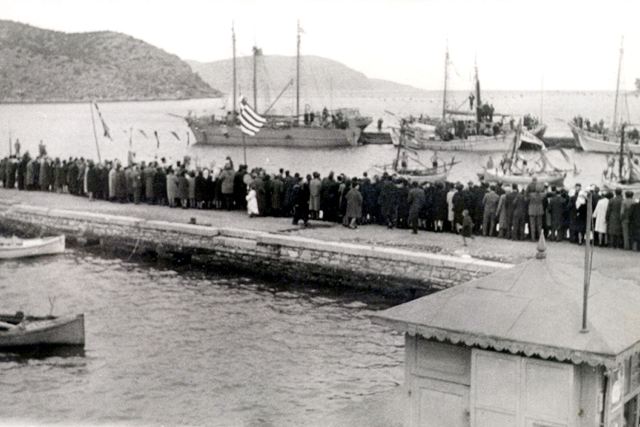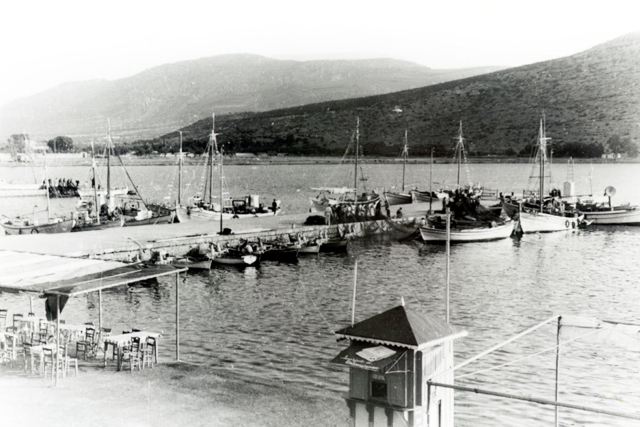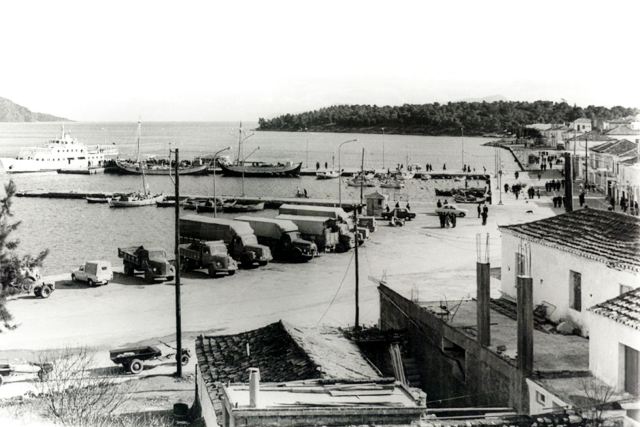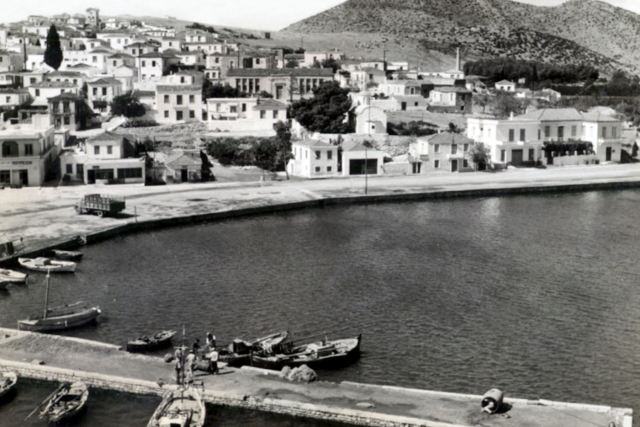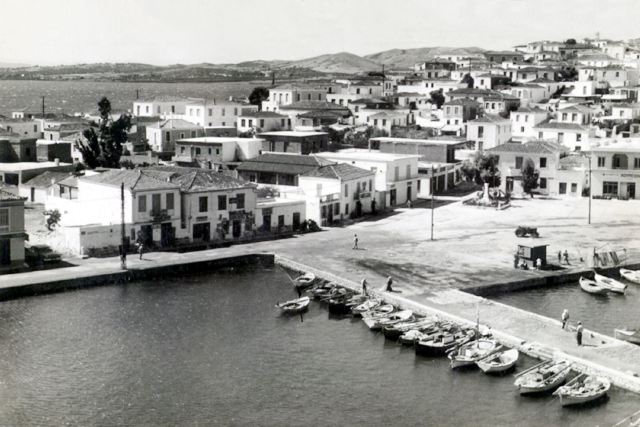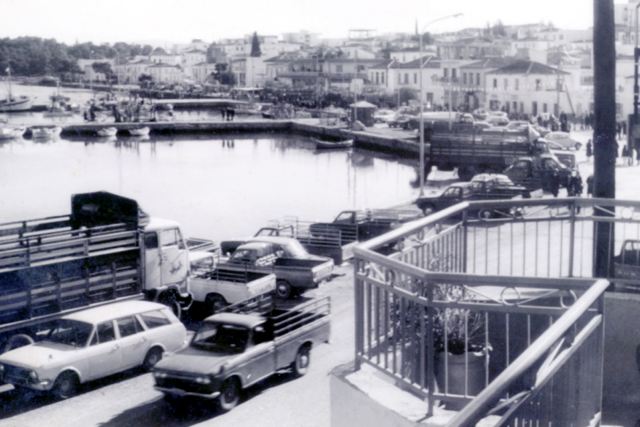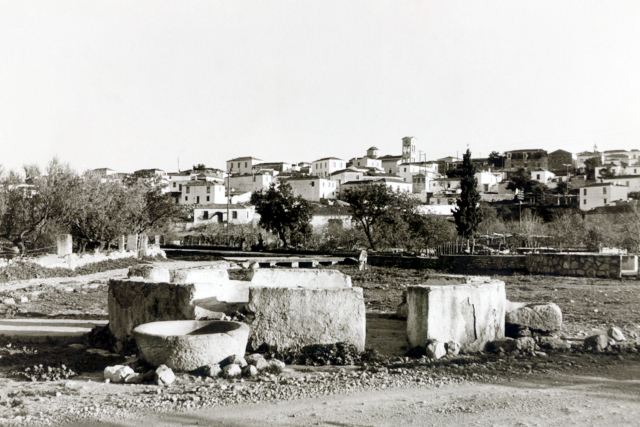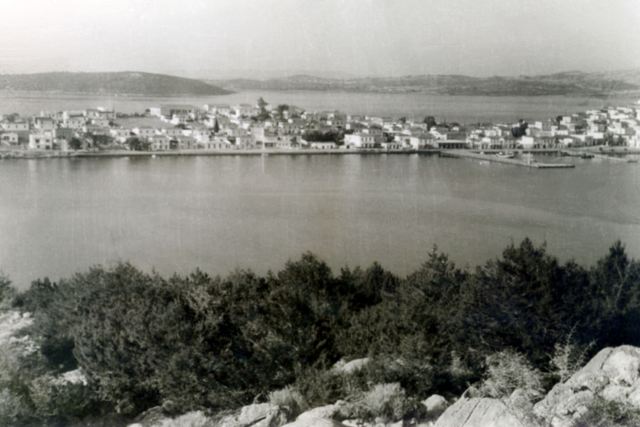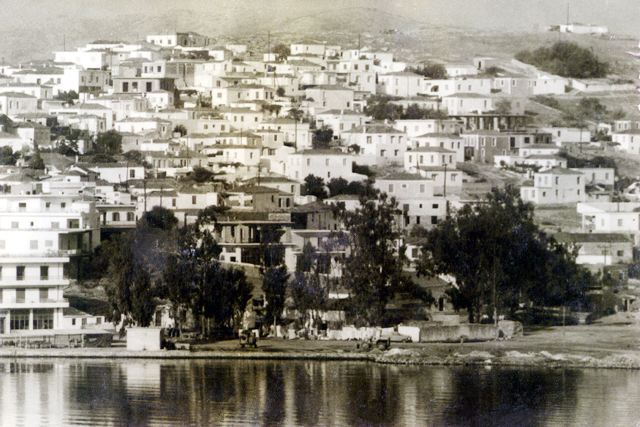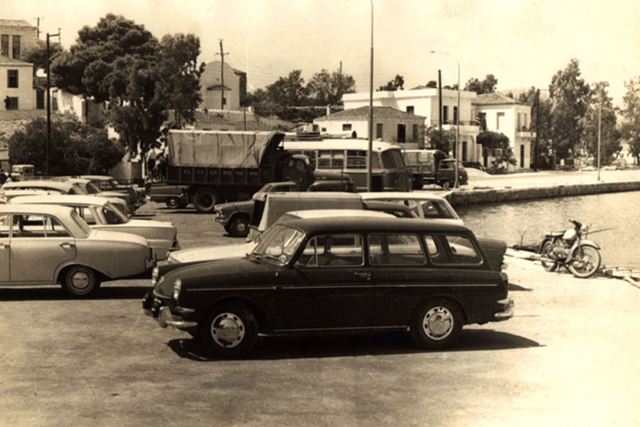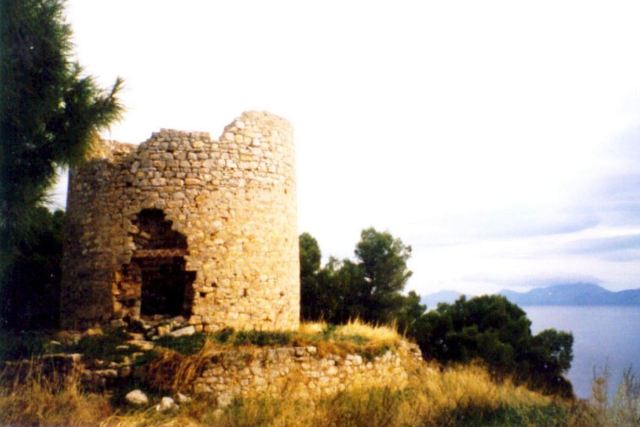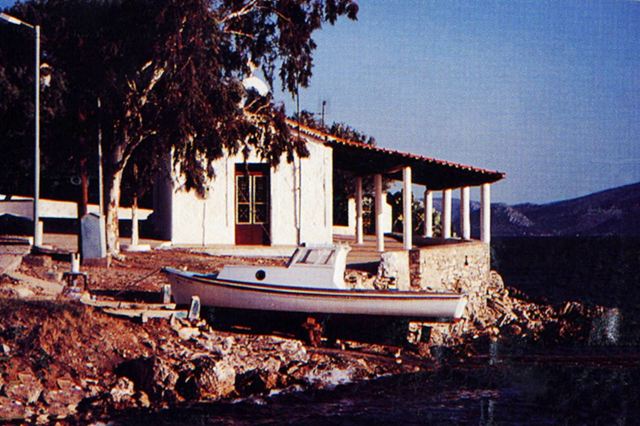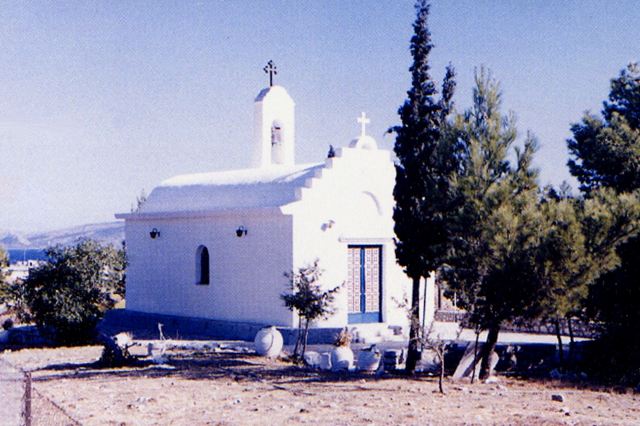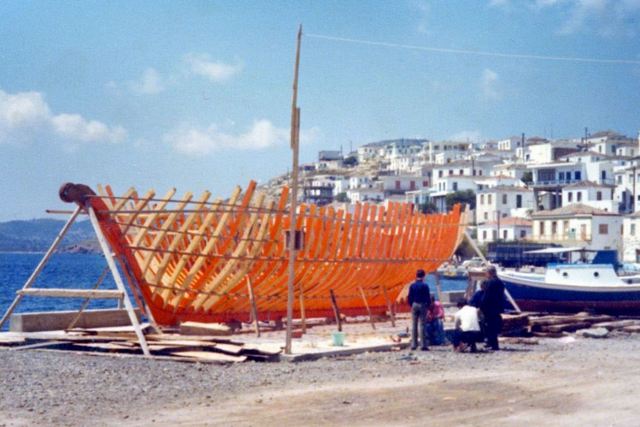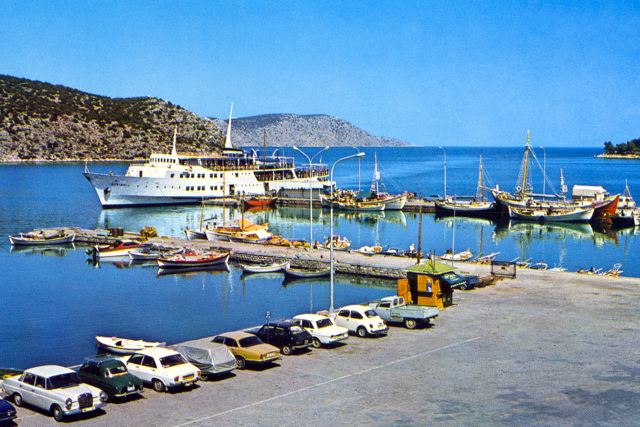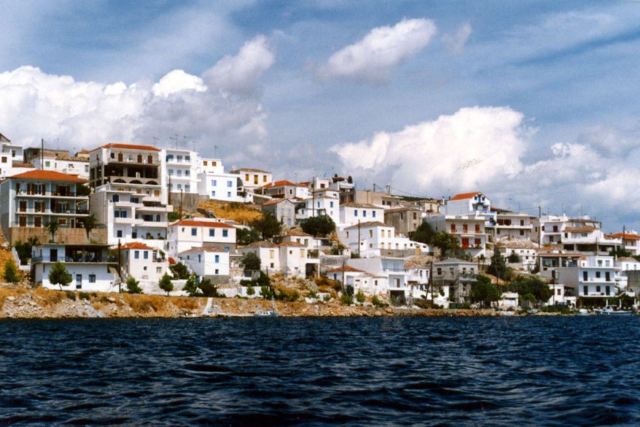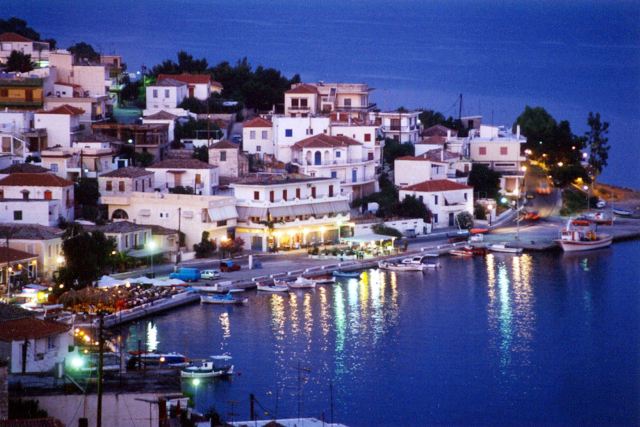20th Century Ermioni

Ermioni began to take its present shape during the 18th and 19th centuries, prior to the Greek War of Independence, when the village was still called Kastri. Although Kastri was a coastal fishing village, the centre was located on the higher Old Village area, surrounding the Byzantine church of Aghoi Taxiarches, on the Eastern slopes of the Hill of Pronos. The higher ground offered better protection and defence against the constant threat of raids from marauding pirates. The Old Village had all the grand properties, schools, tavernas and cafes, with the waterfront areas of Limani and Mandrakia inhabited only by poorer fishermen, who lived in smaller basic dwellings close to their beached boats and nets. Around the mid-1920s, the area referred to as the 'New Town' had not been developed yet. The Bisti peninsula in front of the small church of Aghios Nikolaos was just open ground with ruins of ancient temples and an early Christian basilica, the present Bisti pine forest did not exist at this early period.
At the beginning of the 20th century, building construction slowed down due to the two Balkan Wars (1912-1913) which preceded the Great War (1914-1918) and the following Greco-Turkish War (1919-1922). This early period drained the whole of Greece of finance and manpower. The only notable building that was constructed during this period was the Panaghia church, in the Old Village, which was consecrated in 1921. The New Town began to develop in the years following the Smyrna Catastrophe of 1922 when displaced Greek and Christian refugees settled within Ermioni and throughout Ermionida, following the mass exchange of populations from Asia Minor in 1923. The present pine forest on the Bisti peninsula was originally planted and completed in 1931.
Following the Second World War (1939-1945) and the Greek Civil War which ended in 1949, many more people settled in Ermioni, originally from the barren mountain and highland villages that surrounded Tripoli, in the central Peloponnese. These mountain villagers (mostly shepherds) brought with them their families, and their flocks of sheep and goats. Many settled in the surrounding countryside which offered large plots of rich grazing land, whilst a smaller number settled in the poorer waterfront dwellings at the time. However, those families have really benefitted from their second choice, as the original waterfront dwellings have now been redeveloped, renovated or restored, today becoming prime property locations. With the development of the modern age of global tourism during the late 1960s, 1970s and early 1980s, all those properties along the Limani and Mandrakia waterfronts were much sought after, particularly to establish new tourist facilities of apartments, hotels, pensions, shops, tavernas, cafes and bars.

In the second half of the 20th century, great civic improvements were made within Ermioni, particularly to accomadate the rise in motorised transport and the increase of foreign tourists. Ermioni was always blessed with visitors from Athens, but now came the Europeans and New World tourists searching for their 'authentic' Greece. The whole Limani waterfront was enlarged to create a large pedestrian walkway, that would also accommodate exterior covered seating areas for the many tavernas, cafes and bars that started to appear throughout the developing 1970s and 1980s.
A paved coastal road that finally linked Limani and Mandrakia around the Bisti peninsula, was constructed in the early 1990s. Mandrakia benefited as it got a pedestrian walkway and a new road surface that replaced the old dirt road. Before the end of the 20th century, the pedestrian walkway was widened and the coastal road was extended, beyond the present remaining mandrakia harbours, joining the coastal road around Kapari Bay.
For more than a hundred years, all the developments and changes to Ermioni have resulted with the coastal village retaining most of its original historic character. The modern town hasn't become just another modern Mediterranean tourist resort. Maybe it's for this reason that foreign and local visitors continue to come and enjoy its authentic charming surrounds and genuine hospitality. Maybe its also why so many visitors continue to return to Ermioni, time and time again.
